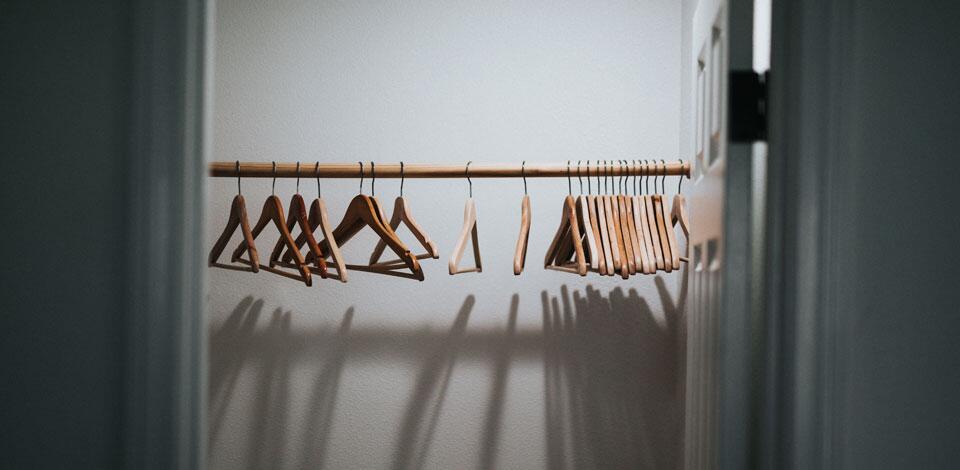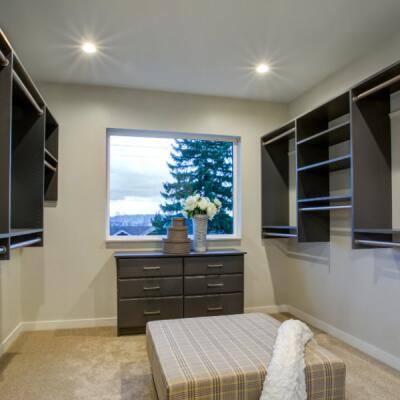Whether you're living in a cozy beachfront cottage, an intimate condo, or a spacious villa, organizing your closet can be a daunting task. For our fashion-conscious customers living and vacationing on the stunning Gulf Coast of Florida, having a closet that is both stylish and functional is a must. Maximizing the limited space in your closet while matching your unique lifestyle and taste is key to achieving a clutter-free and fashion-forward wardrobe.
While some traditional organizing rules may seem like a good starting point, breaking them can often lead to more creative and practical solutions. As a custom closet designer that specializes in medium-large sized closets, we understand the challenges of maximizing space in small closets.
In this article, we're sharing some of our favorite tips for breaking outdated organizing rules and creating a small closet that not only looks great but also serves your needs.
Let’s dive in!
Here are eight organization rules you can ignore in small closets:
1. Sort clothes by color: In a small closet, it's important to be strategic about how you organize your clothes. While sorting by color can be visually appealing, and has been a popular rule of thumb, it may not be the most practical way to maximize your space. Instead, try grouping clothes by type. For example, you could group all your tops together on one shelf and all your pants together on another. This will not only make it easier to find what you're looking for, but it will also make better use of the limited space in your closet.
2. Keep everything at eye level: While it's often recommended to keep frequently used items at eye level, in a small closet, you may need to maximize all available space – which may mean utilizing space above and below your standard clothing rod.
Make the most of the available area by including as much double hanging space as possible, this is the least expensive way to get the most bang for your buck. This is done by installing a second clothing rod or bar underneath the existing rod, effectively doubling the amount of hanging space available in that section of the closet.
3. Don't mix items from different categories: In small closets, it can be challenging to keep items of different categories completely separate due to limited space. Therefore, mixing and matching items on the same shelf or hanging rod may be more practical. Instead of dedicating separate sections to pants and sweaters, consider storing them together on the same shelf. Organize your closet by grouping similar items, such as those with similar styles, fabrics, or purposes, to make it easier for you to find what you need and stay organized.
4. Hang everything: To make the most of your small closet, think carefully about which items you hang and which ones you fold. Hanging clothes is a great way to save space, but not all clothes need to be hung. Consider folding items like t-shirts, sweaters, and jeans and storing them on shelves or in drawers. This will free up hanging space for items that are best stored that way, like jackets, dresses, or suits.
By being strategic about how you store your clothes, you can make sure your small closet stays organized and clutter-free.
5. Add a small chest of drawers: If your closet has enough space to accommodate a small dresser or chest of drawers without compromising hanging space and accessibility, it may be a great way to double your storage. But adding a small chest of drawers to a small closet may not be the best use of available space, as it can take up valuable floor and hanging space and limit access to other areas of the closet, making your closet feel cramped and cluttered.
6. Keep shoes on the floor: While keeping shoes on the floor can be convenient, it can also take up valuable space. Instead, consider using compact shoe racks or hanging shoe organizers to free up floor space and keep shoes organized.
7. Remove seasonal clothes and store elsewhere: If you don’t have the luxury of removing seasonal clothes from your main closet, consider storing them above the hanging space in clear plastic storage bins to keep them organized and out of the way. In a small closet, vertical space is your friend. Maximize shelf space by using stackable bins that go all the way to the ceiling.
8. DIY: Avoid expensive professional closet designers: Although do-it-yourself custom closets can be effective, they may not always be the best solution for small, narrow, or otherwise tricky spaces. In these cases, hiring a professional closet designer who can help you use every inch as efficiently as possible can make a world of difference.
Similar to professional organizers, custom closet designers will evaluate your lifestyle and work with you to design a small closet that maximizes your storage potential and is tailored to your specific needs. There are custom closet designers who focus on creating and installing wardrobe systems, and others who provide additional services such as space planning, designing custom cabinetry, incorporating built-ins, and more. Although it’s an investment, the benefits of hiring a professional far surpass any potential drawbacks.
We hope these tips have inspired you to think outside the box and break some outdated organizing rules. With a little creativity and some strategic planning, you can make the most of your limited closet space and create a functional, stylish storage solution that fits your lifestyle and taste.
Curious how much your dream
closet will cost? A Closet Solutions designer will be happy to assist
you with choices that fit your budget and your lifestyle.
Request your complimentary in-home design consultation and start planning your project today!



